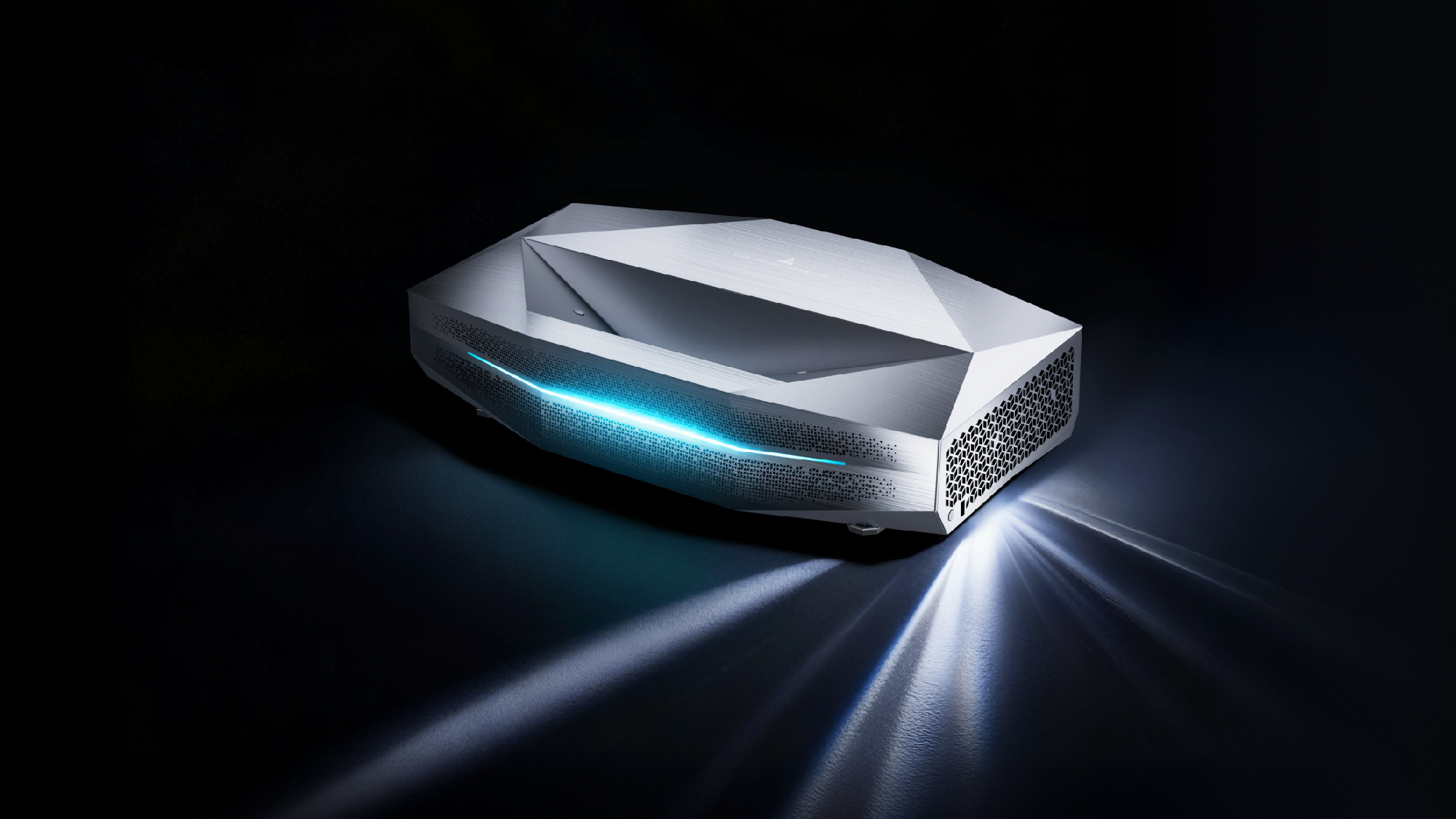Best all-in-one computers in 2025: our top picks tested and rated
These are the best all-in-one PCs we've tested and reviewed
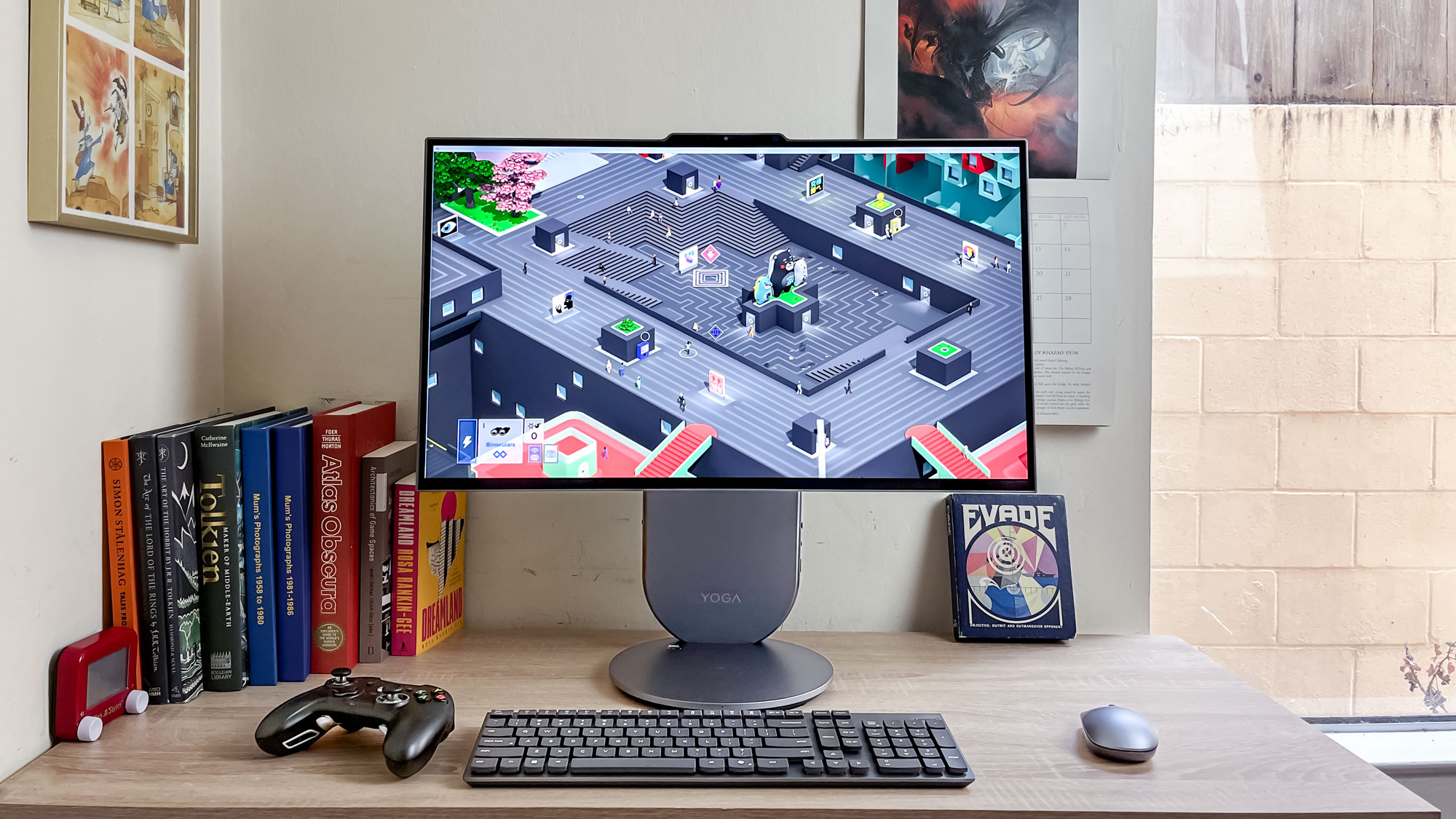
I've been writing about PCs for decades and I've come to really appreciate all-in-one computers because the best all-in-ones are compact, easy to set up and speedy enough for work and play.
I know because my team and I review dozens of PCs every year, including the best all-in-one PCs from Apple, HP, Lenovo and more, so I have a good sense of how they stack up.
That's why I recommend the latest 24-inch Apple iMac as the best all-in-one for most people. It's elegant, easy to set up and use and quite fast thanks to the powerful M4 chip inside. Plus, it comes with a six-speaker sound system and the 4.5K display is gorgeous with nice wide viewing angles, so it's a great way to watch videos or listen to music in the family room.
But like many Apple products the iMac can get expensive, and if you just want a decent all-in-one without the Apple tax I recommend the MSI Modern AM271P because it's a great value. Plus, it has HDMI in and out so you can hook up external displays or plug your laptop in and work on the MSI's 27-inch 1080p display.
If you can afford to splurge and prefer Windows over macOS I recommend the Lenovo Yoga AIO 27 over the MSI because it's more capable and more adjustable, with cool special features like a 90-degree rotating display and a wireless phone charger built right into the stand!
For more details, as well as full reviews and a blow-by-blow breakdown of how these all-in-ones stack up in our in-depth performance testing, scroll on!
The quick list
In a hurry? Here's a brief overview of the computers on this list, along with quick links that let you jump down the page directly to a review of whichever PC catches your eye.
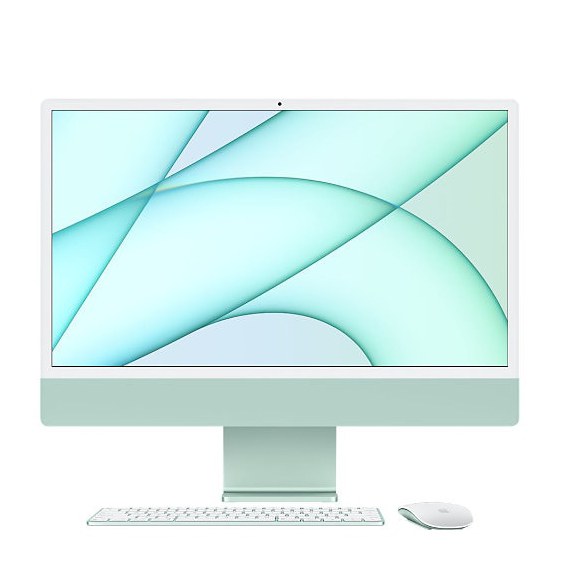
Apple's 24-inch iMac is our top recommendation for the best all-inone because the Apple M4 chip inside gives it plenty of power for work and play, while the 24-inch Retina display looks great in a family room or office. Plus, the webcam and six-speaker sound system are great.
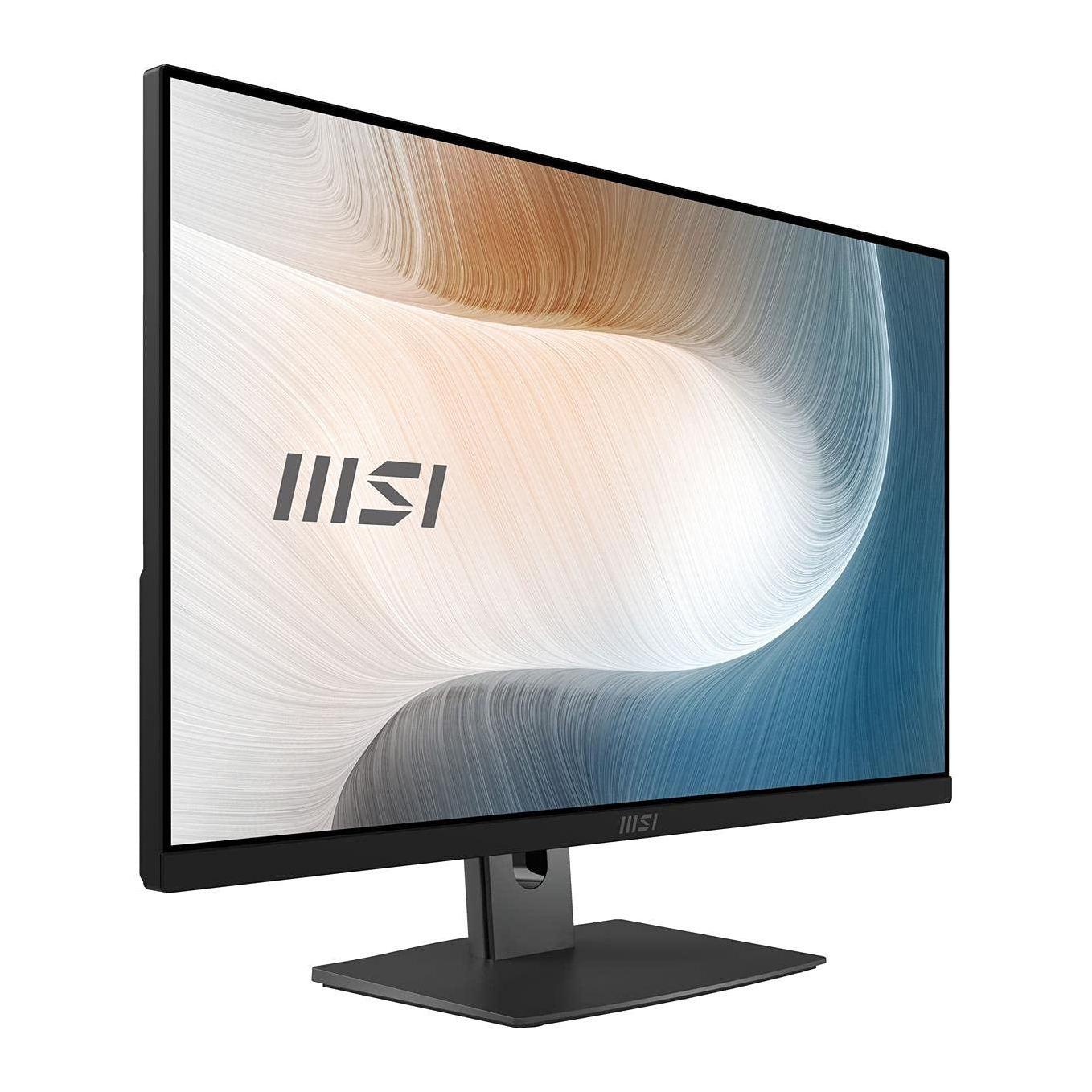
The MSI Modern AM271P is an awkwardly-named all-in-one aimed at the office that's affordable and easy to set up. The built-in speakers aren't great and the aging internals won't run games well, but this remains the best all-in-one for getting things done on a budget.
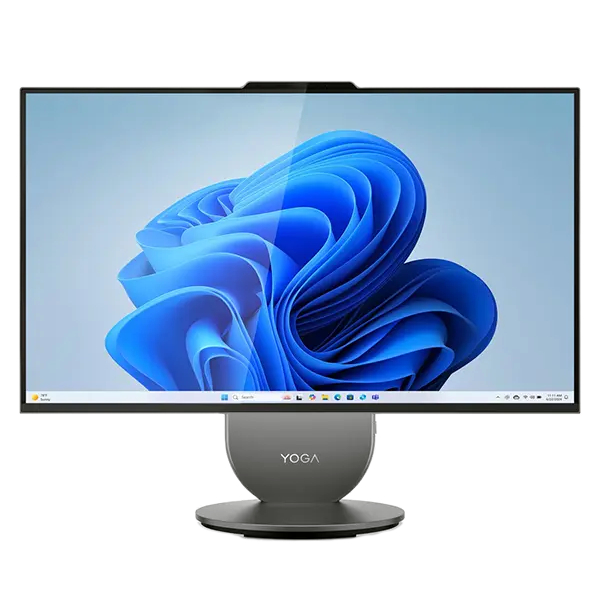
The Lenovo Yoga AIO 27 is a nice upgrade over the MSI if you want a Windows 11 all-in-one PC that's very adjustable and sports a lovely 27" rotatable display with nice built-in speakers and a wireless phone charger built into the stand.
The best all-in-one computers you can buy right now
Why you can trust Tom's Guide
The best overall
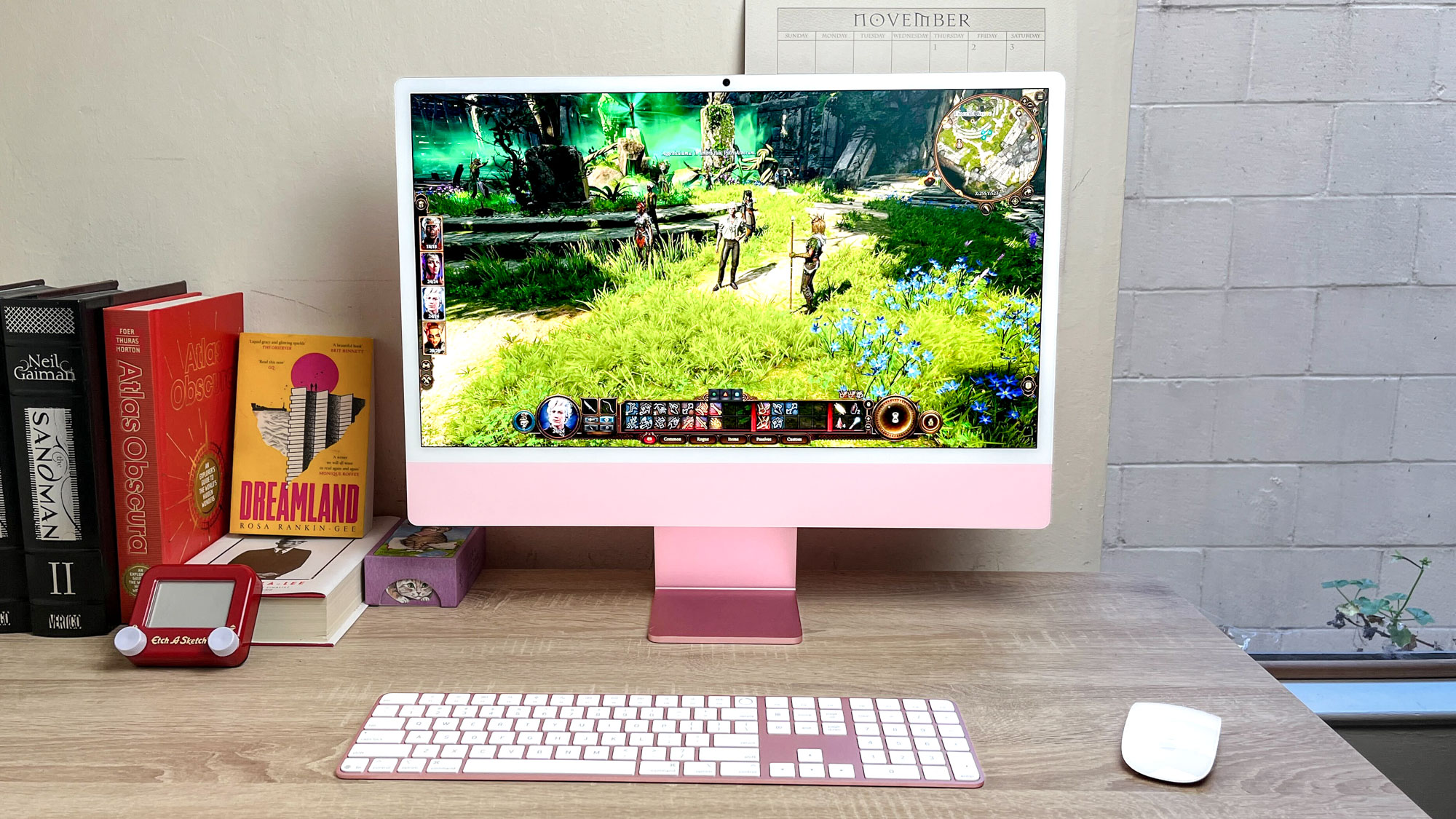

Specifications
Reasons to buy
Reasons to avoid
The colorful Apple iMac M4 looks an awful lot like its predecessors, but under the hood this all-in-one is powered by the all-new Apple M4 chip that helps propel it to our top spot on this list.
I really like the iMac because it combines good performance, a surprisingly good speaker setup and a lovely display with great viewing angles in one attractive package that's easy to fit into your desk.
The 24-inch 4.5K display is among the best you can get on an all-in-one, and its wide viewing angles make it surprisingly good for gathering friends or family around to watch YouTube videos or stream a TV show. Pair that with the six-speaker sound system, which supports Apple's Spatial Audio feature, and you get the best theater experience out of any PC on this list.
Pair that with the speed and power of the M4 chip, which is more than capable of handling basic work tasks, homework, basic video editing and light gaming, and you start to see why I love this machine as a general-purpose PC.
Plus, the 12MP webcam is great for FaceTiming relatives or taking part in remote learning, and if you're using FaceTime you can use the new Desk View feature to transmit a live feed of whatever's in front of you on your desk in addition to your own video.
The only real down side of the iMac M4, in my eyes, is the fact that it's not very adjustable (you can't tilt it up or down or raise and lower it, for example) and you don't get much in the way of ports: just Thunderbolt 4 ports, an audio jack and an optional Ethernet port for wired connections.
Despite those drawbacks I maintain the Apple iMac M4 is a great all-in-one that's easy to recommend to families, students and any Mac fan who needs an elegant PC that doesn't take up a ton of space and looks good on a desk.
Read our full Apple iMac 24-inch review.
The best value
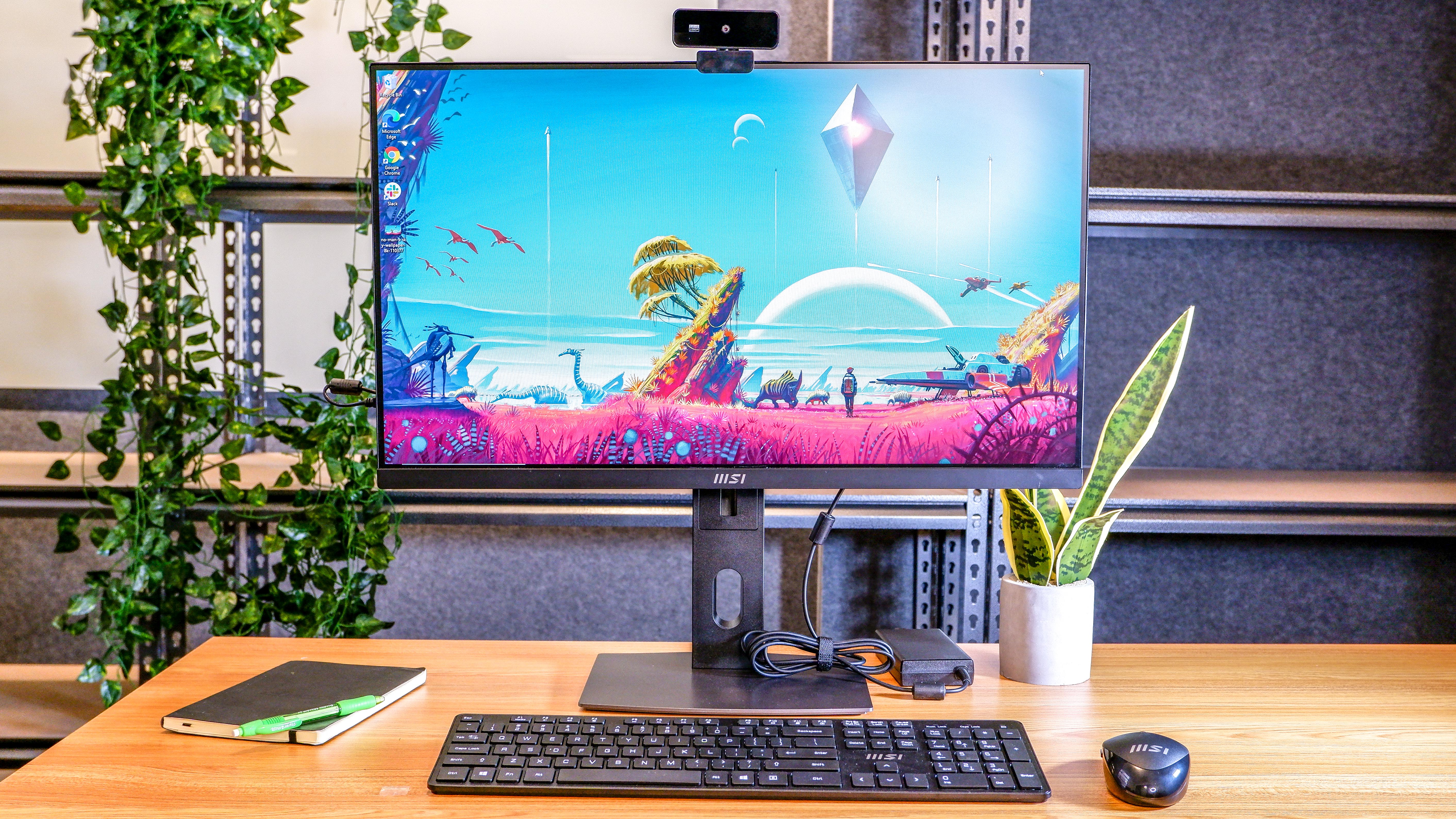

Specifications
Reasons to buy
Reasons to avoid
The MSI Modern AM271P 11M is an awkwardly-named all-in-one that's quite good if you need something (relatively) affordable that's capable of tackling the day-to-day tasks of handling business and getting things done. It's a smidge cheaper than the iMac M4, yet is more than good enough for basic work and play.
That's because this PC packs a decent Intel Core i7 CPU into its display along with 16GB of RAM and a 512GB SSD. As you'll see from our test results section below it can't hold a candle to the iMac M4, and the screen isn't as bright or colorful as the iMac's, but the MSI Modern's 27-inch 1080p display is perfectly fine for watching movies, browsing the web and getting work done.
The MSI Modern is more adjustable than the iMac M4 as well, so you can raise, lower tilt and swivel the display a fair bit so it's more comfortable for you to use. This lets you accommodate your unique ergonomic needs more easily, and thanks to the built-in VESA mount you also have the option of mounting it on a wall or monitor arm for more convenient workplace setups.
Plus, this all-in-one comes with both an HDMI in and HDMI out on the port array, which means you can plug in an external PC and use the MSI's screen (so you could hook up your laptop to work from home) or you can plug in an external display and use the MSI on the external screen. That lets you hook up additional displays or use an alternative if the MSI's screen dies, which is a nice option to have.
Admittedly, the 1080p webcam and pair of built-in 2.5W speakers are not the best. They're more than good enough for work calls and getting things done, but you may want to invest in a decent pair of headphones down the road if you like listening to music or watching movies on your all-in-one.
Likewise, the packed-in mouse and keyboard are functional but not premium. You can get by using them just fine, but you will probably want to provide your own down the road for maximum comfort.
However, these are the kinds of drawbacks you should expect from a cheap, business-focused all-in-one.
Read our full MSI Modern AM271P 11M review.
The best upgrade pick
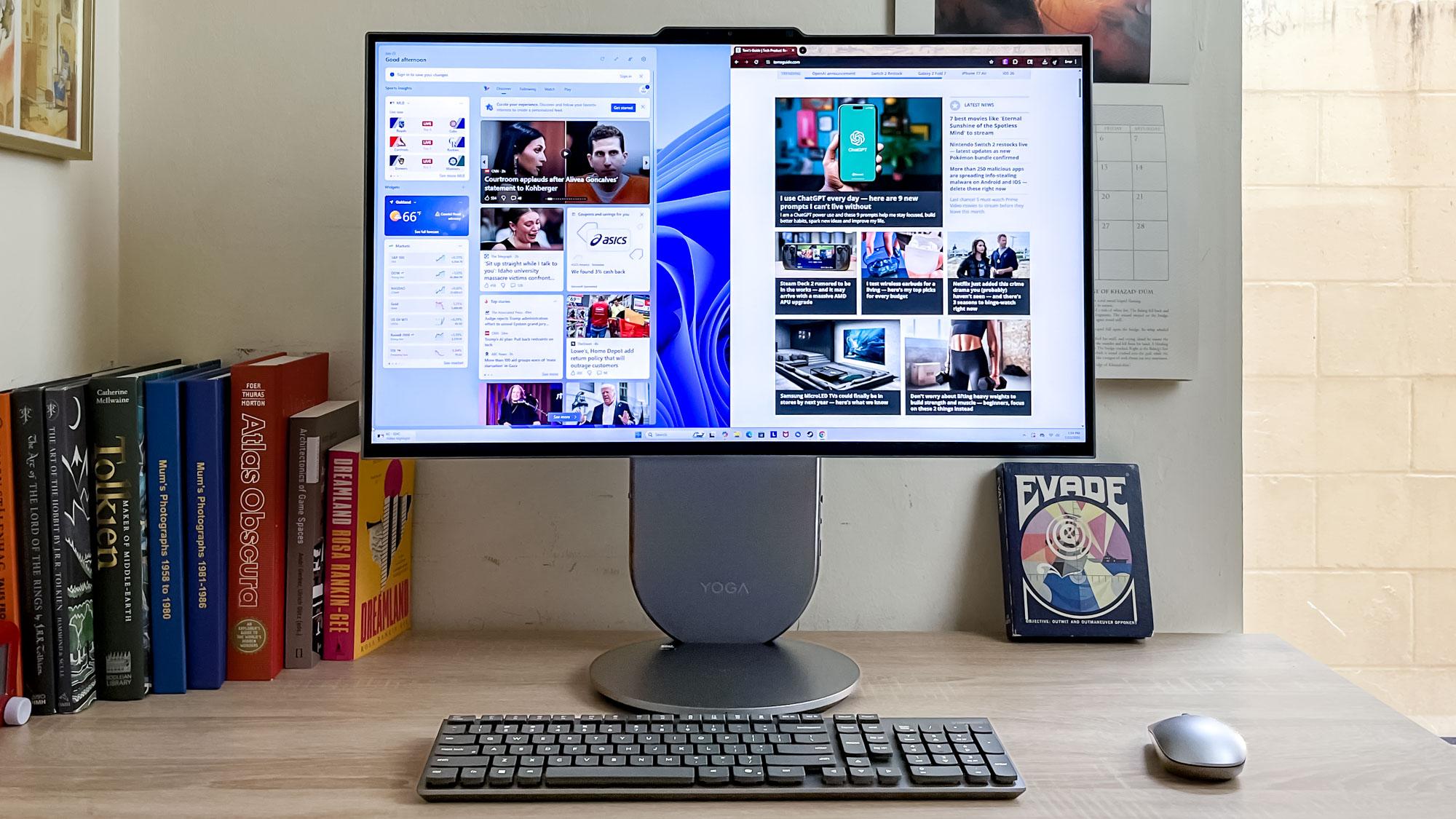
Specifications
Reasons to buy
Reasons to avoid
I like to recommend the Lenovo Yoga AIO 27 to folks who can afford to spend four figures on a nice Windows all-in-one because it has everything you need plus some cool (and useful) features that other's don't.
I'm talking of course about the Qi wireless charger built into the base of the display, so if you have a compatible smartphoney you can leave it on the stand to charge while you work. The display is adjustable too, so folks in your home can tilt, swivel, raise and lower it to make it more ergonomic to use. The screen rotates too, which is a rare feature that is pretty fun when you're playing vertically-scrolling games or watching vertical videos on sites like TikTok.
The 27-inch QHD (2560 x 1440) IPS panel looks nice and bright in person and delivered vibrant, accurate colors in our display tests, occasionally beating out the iMac M4. The built-in JBL speakers deliver good sound quality, to boot, and I love that you can rotate the screen up to 90 degrees.
And while you can't play the latest games at max framerates on this PC you can have some fun and get some serious work done too, as our performance tests show the Yoga AIO 27 and its Intel Core Ultra CPU and 16GB of RAM give it enough chutzpah to compete with (and even beat in some tests) our top overall pick on this list, the iMac M4.
The included keyboard and mouse are also pretty high-quality for pack-ins, although the keyboard is more satisfying than the flimsy small mouse. However, be aware that the webcam delivers grainy images and video that can't match the clarity of Apple's Center Stage cameras.
Even so, the Lenovo Yoga AIO is a great line of all-in-ones and if you can afford to upgrade to one, I recommend it!
Read our full Lenovo Yoga AIO 27 review.
How to choose
How to choose the best all-in-one computer for you
Even the best all-in-one computers generally don't deliver a ton of power, so if you need a PC for serious photo/video editing, coding or playing games you should probably look elsewhere (like our regularly-updated list of the best gaming PCs).
But if you need an all-in-one for general computing, you have a lot of great choices. The number one thing to decide when shopping for the best all-in-one computer for your needs is what operating system do you want: macOS or Windows?
While there are a few all-in-one Chrome PCs, the vast majority run on either Apple or Microsoft's operating system. And while Windows AIO PCs like the OmniStudio X 32 support a wide variety of software and are compatible with any game you care to run, those strengths of Windows 11 matter less when it comes to all-in-ones because these PCs generally don't have the power or cooling to run the most demanding apps and games anyhow.
So if you prefer macOS, you should definitely feel good about choosing an all-in-one like the 24-inch iMac. Macs are just as capable as Windows PCs these days, and the webcams built into Apple's PCs are excellent. Plus, the modern iMacs can also run apps from Apple's App Store and support modern features like iPhone Mirroring, so you can easily access iOS apps or even your phone's home screen right on your desktop PC.
Frequently asked questions
What are the advantages and disadvantages of buying an all-in-one?
This is definitely something you should be aware of before you pull the trigger on a new PC, so let's quickly run through the ups and downs of an all-in-one.
First and foremost, when you buy an all-in-one PC you don't typically have to worry about buying any other accessories because every all-in-one comes with its own monitor, webcam and speakers built in. Most also come with a free keyboard and mouse packaged in, though you'll want to check and make sure before you buy because sometimes you will have to provide your own mouse or keyboard.
The other advantage of an all-in-one PC is that they are typically more compact than a desktop PC because you don't need space for a tower, monitor and speakers on your desk—they're all built into the all-in-one, so they're great for small apartments, nooks and shared spaces.
But there are also some serious disadvantages to buying an all-in-one PC. You typically have less room to customize them to your needs, for one, and they typically aren't sold with discrete GPUs, powerful CPUs or oodles of RAM and storage, so they aren't great for demanding tasks like serious gaming, video editing or software development. They also tend to be more expensive than an equally powerful desktop PC, even more so if you're open to building your own PC instead of buying one pre-built.
The other main disadvantage is that all-in-one PCs typically aren't easily repairable. This may not be a big drawback if you're not comfortable troubleshooting a PC anyhow, but it also means that it's harder and more expensive to find someone who can repair a malfunctioning all-in-one. And when a component of your all-in-one fails, it often can't be swapped out and replaced, so you typically have to junk the whole PC instead of just replacing a busted monitor or malfunctioning CPU.
Which is better, a traditional desktop PC or an all-in-one PC?
This is a common question, and the answer depends on what you need the PC for and if you want to upgrade it in the future.
The simplest answer is: if you want the freedom to modify or upgrade the PC in the future, a traditional desktop PC—that is, one in which the PC is in an accessible case separated from the monitor—is preferable to an all-in-one PC because most all-in-ones are not designed to be modified by the owner.
On rare occasions you may find an all-in-one PC for sale that offers the option of upgrading one or two components—typically storage and RAM—but that's fairly uncommon. All-in-one PCs are specifically designed to be compact and to house every key component in one device (hence the "all-in-one" moniker), which is a key part of their value for families, students and anyone who needs a PC that doesn't take up much room.
So if you would prefer to buy a PC you can modify or upgrade in the future, I recommend a traditional desktop PC over an all-in-one. You can check out our regularly updated list of the best computers on the market for some suggestions.
But if you just need a desktop PC for work, surfing the web and some light gaming, an all-in-one will do you just fine. And since they're typically more compact and elegant than a desktop, a great all-in-one like the Apple iMac is a great choice for a small office, family room or bedroom PC.
CPU performance of the best all-in-one PCs compared
We run every all-in-one PC we review through our testing lab to see how they perform, so I wanted to compile the CPU performance tests here so you can easily get a rough idea of how the best all-in-ones stack up at a glance.
While CPU performance isn't everything, it does give you a rough sense of how "fast" the PC will feel (although RAM also makes a big difference in responsiveness and multi-tasking) and how capable it is. The tables below compare the scores for benchmark tests we run using Geekbench 6 (which measures CPU performance) as well as our own custom tests for measuring file copy speed and video editing speed.
These comparisons give you a general sense of how these machines stack up performance-wise, so you can make sure to avoid buying a machine that's mismatched to your needs. As you can see, Apple's M4 iMac is the performance king across the board, though due to some differences in the way Apple's file systems work our usual file transfer speed test does not run effectively on the iMac M4. That doesn't mean it's slow or incapable, it's just a quirk of macOS vs. Windows 11.
| Header Cell - Column 0 | Geekbench 6 (multi-core) | 25 GB File Copy (MBps) | Handbrake (Min:Seconds) |
|---|---|---|---|
Apple iMac M4 | 14,724 | N/A | 5:03 |
MSI Modern AM271P 11M | 5,232 | 420.8 | 13:10 |
HP Envy 34 | 7,935 | 1,579.5 | 8:23 |
How we test the best all-in-one PCs
How we test to find the best all-in-one PCs
Every all-in-one we review goes through a variety of benchmark tests in our lab as well as long hours of real-world use. As with our laptop reviews, we use a colorimeter to measure the brightness, color accuracy and color gamut of each all-in-one's display.
For performance, we use the Geekbench CPU benchmarking test to measure a system's overall processing abilities. We also run a custom spreadsheet test to see how long a PC takes to match thousands of names to addresses. To evaluate each system's hard drive speed, we measure how long it takes to copy a sizable workload.
Most importantly, we spend a ton of time simply using each all-in-one desktop for everyday activities. We watch movies, do work, play games, and blast music on the speakers, all to get a better sense of which ones are worth your money.
For more information, check out our how we test page for Tom's Guide.

Alex Wawro is a lifelong journalist who's spent over a decade covering tech, games and entertainment. He helps oversee the computing department at Tom's Guide, which includes managing all-in-one PC coverage and reviewing many himself every year.
Get instant access to breaking news, the hottest reviews, great deals and helpful tips.

Alex Wawro is a lifelong tech and games enthusiast with more than a decade of experience covering both for outlets like Game Developer, Black Hat, and PC World magazine. A lifelong PC builder, he currently serves as a senior editor at Tom's Guide covering all things computing, from laptops and desktops to keyboards and mice.
 Club Benefits
Club Benefits





